If you are a wildlife junkie like I am, gorilla trekking should be on your bucket list. Most people go on a wildlife safari to Africa, starting with the Masai Mara in Kenya or Kruger National Park in South Africa. Over the years, I have done many safaris and game drives through Africa and seen more lions, cheetahs, elephants, zebras and giraffes in person than I imagined I would. But only in Rwanda, was I able to see mountain gorillas!
If you have watched the movie King Kong, you may be familiar with fierce giant gorillas portrayed to be monsters destroying cities. But in fact, gorillas are very docile and human-like. These gentle giants share 98.3% of their genetic code with humans. Therefore, their behaviors are very human-like. The large great apes are our third closest cousins after chimps and bonobos.
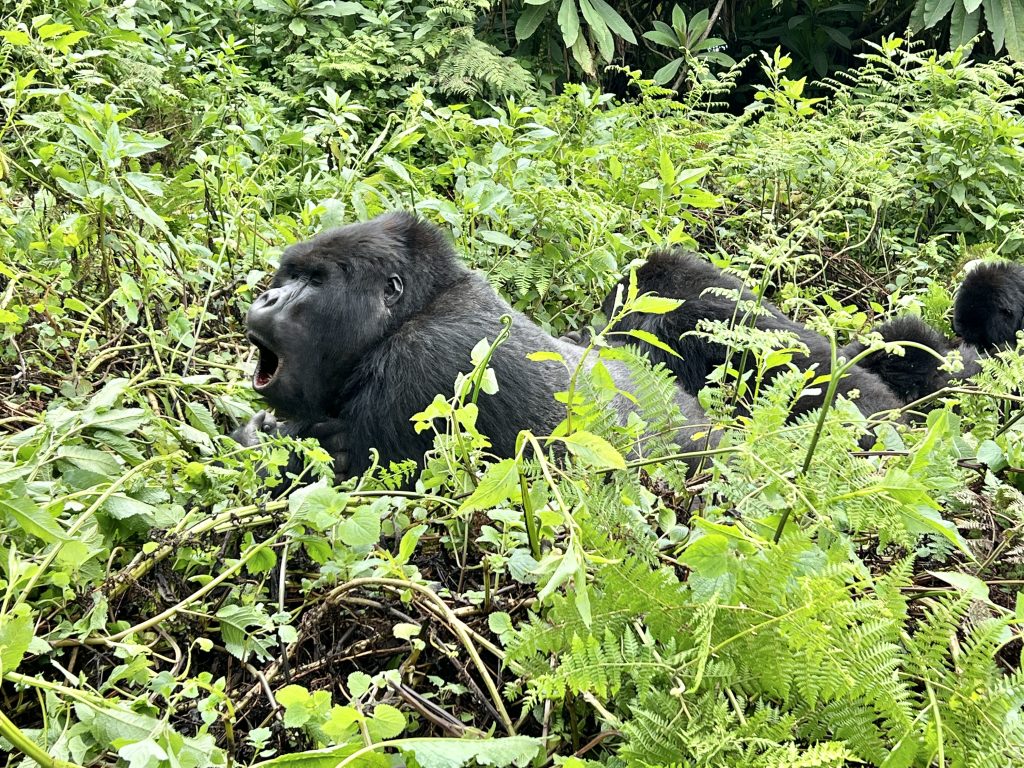
Where can you see gorillas in the wild?
Only 1063 gorillas are left in the world, of which 604 are in the Virunga Massif. Mountain gorillas are only found in equatorial Africa, in the dense jungles of Rwanda, Uganda and the Democratic Republic of Congo. So, if you have never visited any of these three countries and been on a gorilla trek, then you have only seen gorillas in captivity.
Rwanda is perhaps the best option of the three for beginner gorilla trekkers. The country is well developed to support tourism infrastructure, so you can find good roads, high-end hotels, and well organized tours. The terrain is also relatively easier to navigate on Rwanda’s side.


What is the best time of the year to go gorilla trekking?
Since the gorillas live in these jungles year-round, there is technically no bad time of the year to see them. However, the wet season (from October-May) can be more challenging for hiking as the trails get muddy and steep. September is perhaps the best time to visit Rwanda if you want to trek and also watch the gorilla naming ceremony.
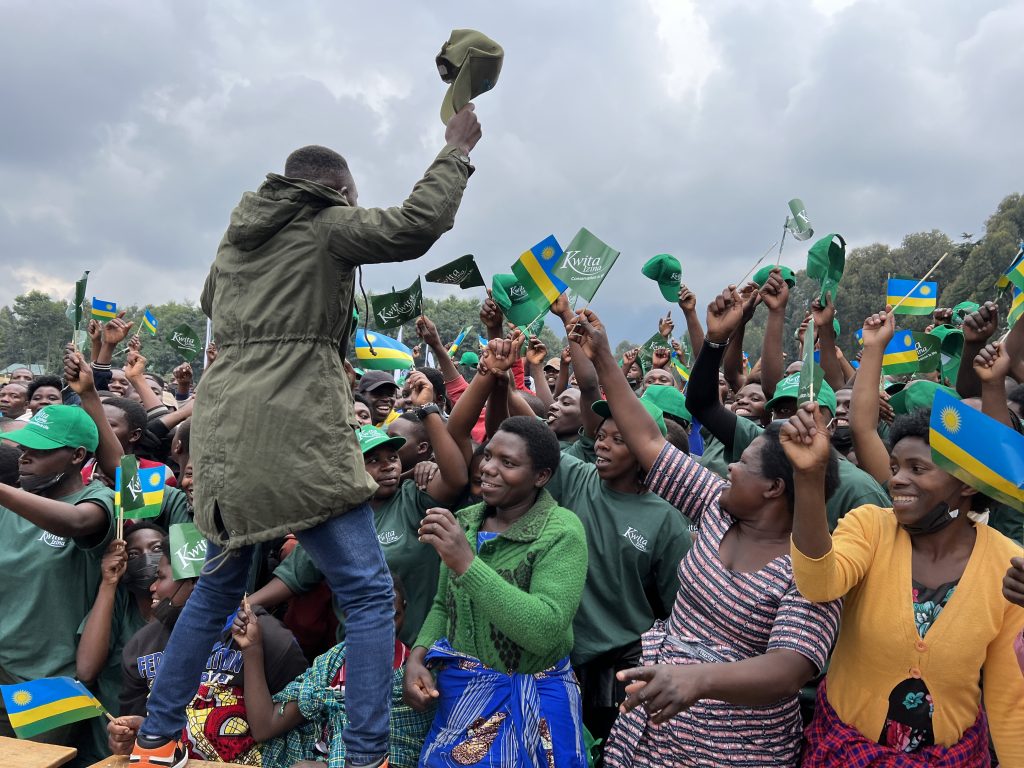
Kwita Izina is the largest event in Rwanda, where baby gorillas born in the last year are officially named with lots of pomp and show. A big stage is set up at Volcanoes National Park where world-renowned performers energize the guests with music and dance. Over 50,000 visitors gather to celebrate the gorillas and Rwanda’s commitment to their conservation. Everyone from the president of Rwanda and international dignitaries, to business owners and community members attend. In 2022, 20 baby mountain gorillas were named by celebrity artists, sportsperson and philantropists. His Royal Highness The King of Wales also named a baby mountain gorilla virtually.

Where does the gorilla trek start?
You will need to book a guided tour to trek with the gorillas in Rwanda. Once you arrive in the capital of Kigali, travel by a safari vehicle to the region of Musanze (about 3 hours drive). The road is windy, going through mountains and tea plantations. Plan to take medication if you tend to get motion sickness.
In Musanze, you can check in to Virunga Inn Resort and Spa, a lovely boutique or if you want to splurge, book a night at the ultra-luxurious One & Only Gorilla’s Nest.
The gorilla treks begin at the crack of dawn, so make sure to get a good night sleep before.
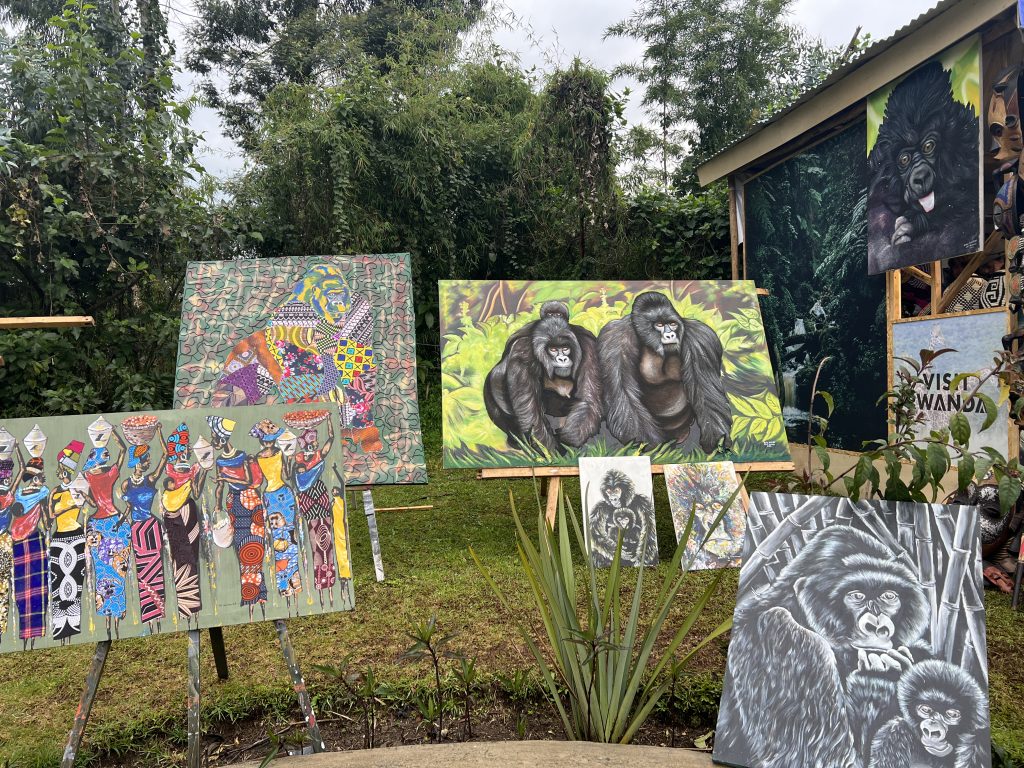
In the early morning, you will drive to the visitor center of Volcanoes National Park, to receive further instructions and paired with your trekking party. Here, soak in the breathtaking scenery with morning mist rising about the Virunga volcanoes at over 4000 meters. There is lots of festivity at the visitor center with live music and dance performances, free tea and coffee vendors, as well as art and souvenir shops. You will have about an hour to walk around, get your gear on, enjoy some snacks and use the toilet facilities before heading out on your hike.
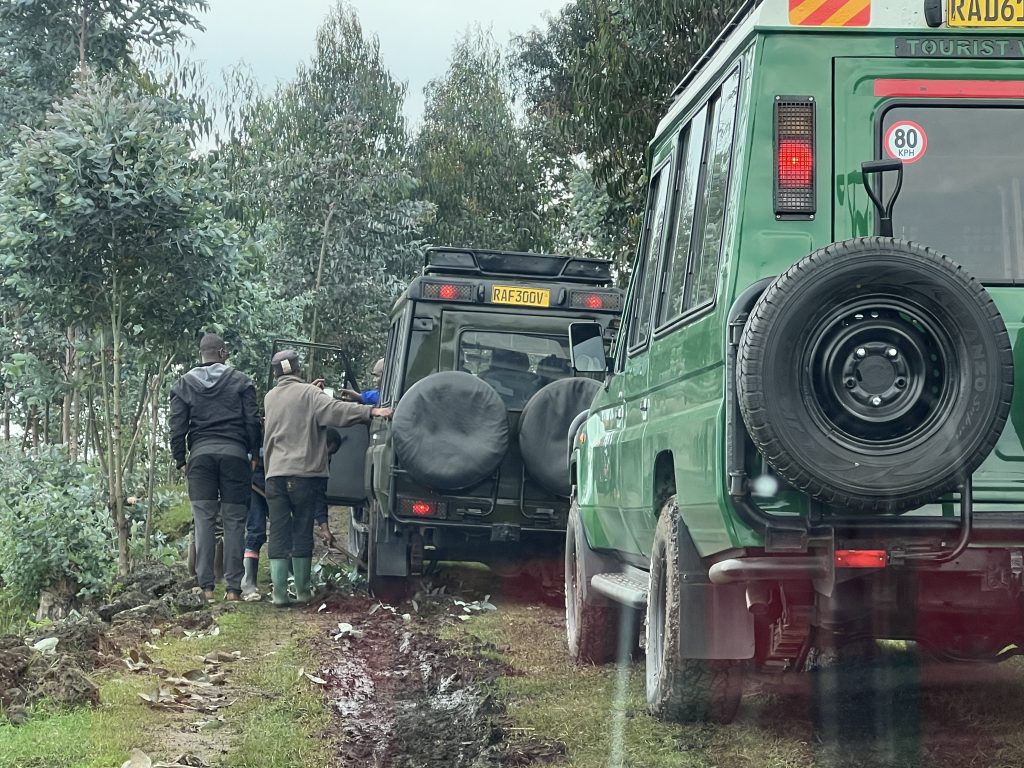
What’s it like to gorilla trek?
Once the guides receive update from the rangers about the exact location of the gorilla families, it’s time to get going. Groups of eight people are formed and you may be given the option of taking a an easier or a more difficult hike. If you have a preference of which of the 10 gorilla families you prefer to see, that will determine your path. The mountain gorillas live in family groups of 5-50, led by a dominant male or silverback. The family may have more than one silverback in the group but only one is designated as the leader.
I opted for an easier hike. My only goal was the see the mountains gorillas, babies would be nice too. So we first drove about an hour and a half from the visitor center to the top of a mountain, crossing dirt paths, farms and villages. Our safari vehicle got stuck in the mud pool at one point and some farmers helped us get out.

Then we met with armed rangers and porters to start the hike. We walking for about an hour through potato farms and enjoyed beautiful views from the top. There were few golden monkeys too. We saw gorilla claw marks on eucalyptus trees, which was exciting. The gorillas had been in the area! As we made our way through the entrance of the national park, the foliage got thick and thorny. The bushes rose up above my height. Stinging nettles brushed my legs (yes it was painful but only lasted a few minutes). The rangers use machetes to clear out the path for us to maneuver through. My porters were very helpful in pulling me up the steep slopes and helping me manage my steps. Having more familiarity with the terrain, they could pinpoint where to step and which plants to avoid touching.
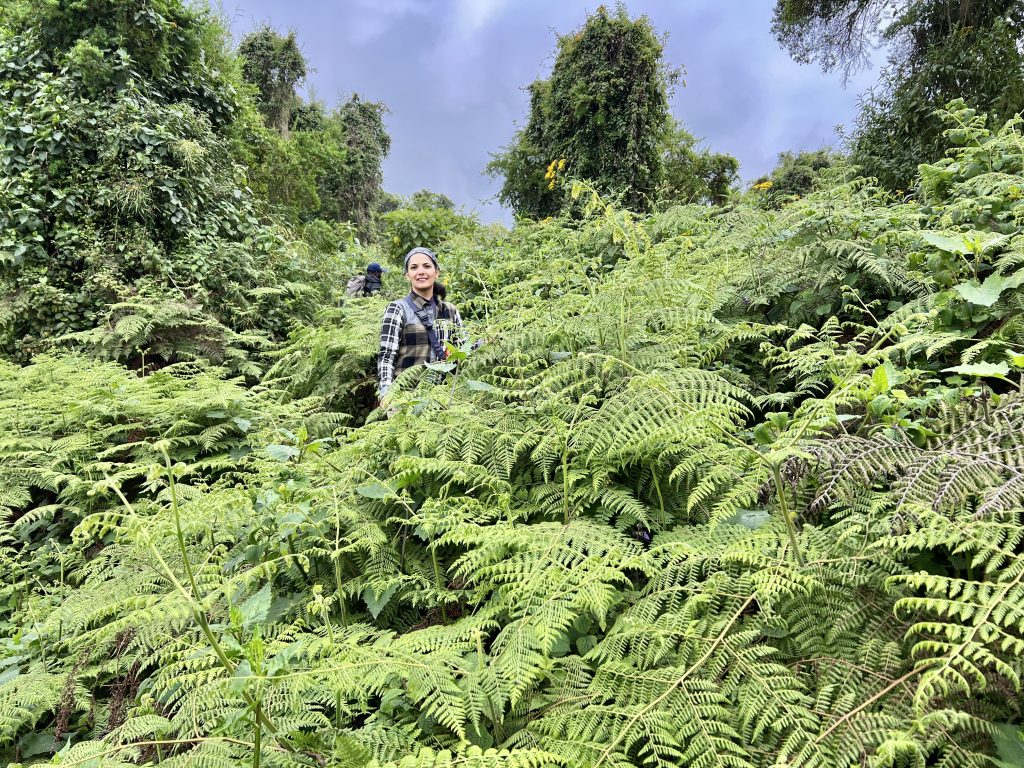
Once the rangers confirmed we had neared a gorilla family, we left our backpacks and walking sticks with the porters, and walked a few more steps to get closer to the apes. Only us eight people on the tour and the guide could get near the family. Everyone else has to stay back.



And when you finally see them
When I first saw the gorillas, I was dumbfounded. It felt like I stepped into my television set and got into the National Geographic documentary I keenly watched. Perhaps I was having a 5-D experience? It was surreal! The Susa family I saw has 18 members, including 3 silverbacks and 2 babies. They were rolling in the bushes, scratching their heads, covering their eyes, and taking long naps. At one point, a mommy gorilla picked up her baby, brought it close to her face and gave her a big gorilla kiss. It was the cutest thing I had ever seen!
The Susa family is one of the most difficult ones to spot as they live in the higher altitude that is challenging to trek. Susa is also famous for having the first set of surviving twins in the history of mountain gorillas in 2004. However, today they had come down the mountains, so I got very lucky. The two babies in the group were – Muganga Mwiza named by Mr Laurene Powell Jobs, and Baho named by Dr Frank Luntz.
The gorillas seemed oblivious to our presence. They were seeing us. We made eye contact, but they didn’t seem to be bothered. My guide told me that sometimes the gorillas come and put their arm around you or play with you. I would have loved that!
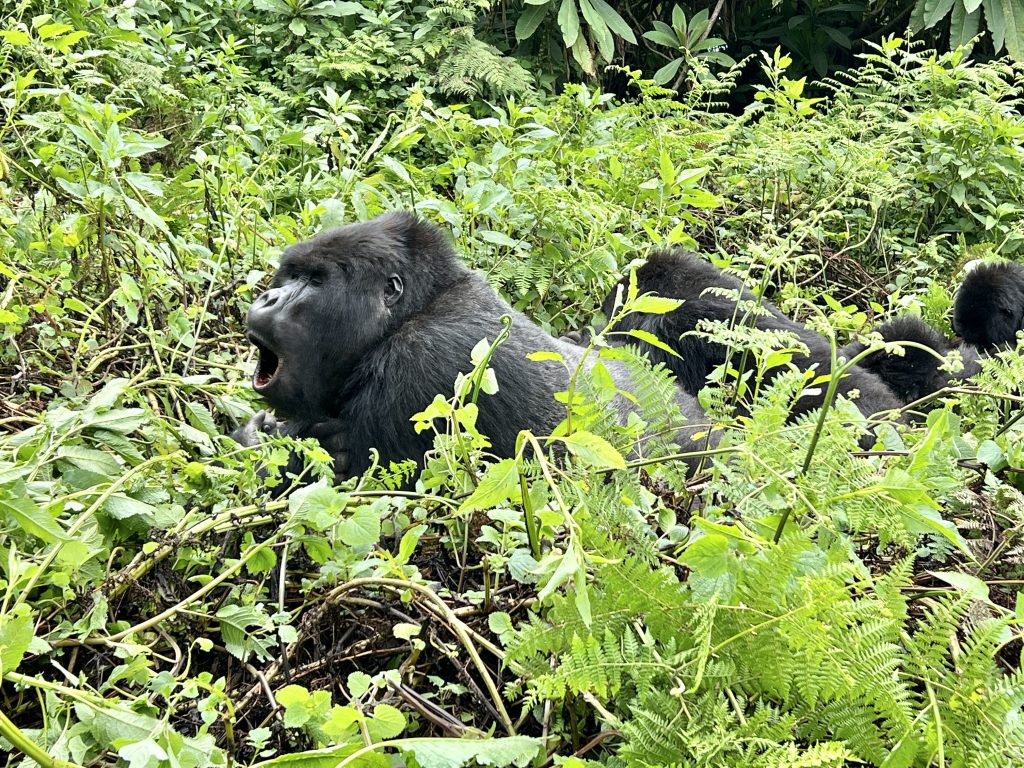
Maintain a 10-foot distance from the gorillas but they can get closer to us. Of course, you must not touch them.
You can spend up to an hour will the gorillas, but the hour goes by very quickly. I must have taken a thousand photos and videos during that time.
Then it was time to say goodbye to the Susa family and trek back down. Our entire tour lasted about 6-7 hours and we were back at the lodge for a late lunch and shower. Other groups who opted for more difficult hikes were out for about the same time, but returned back muddier and more tired.
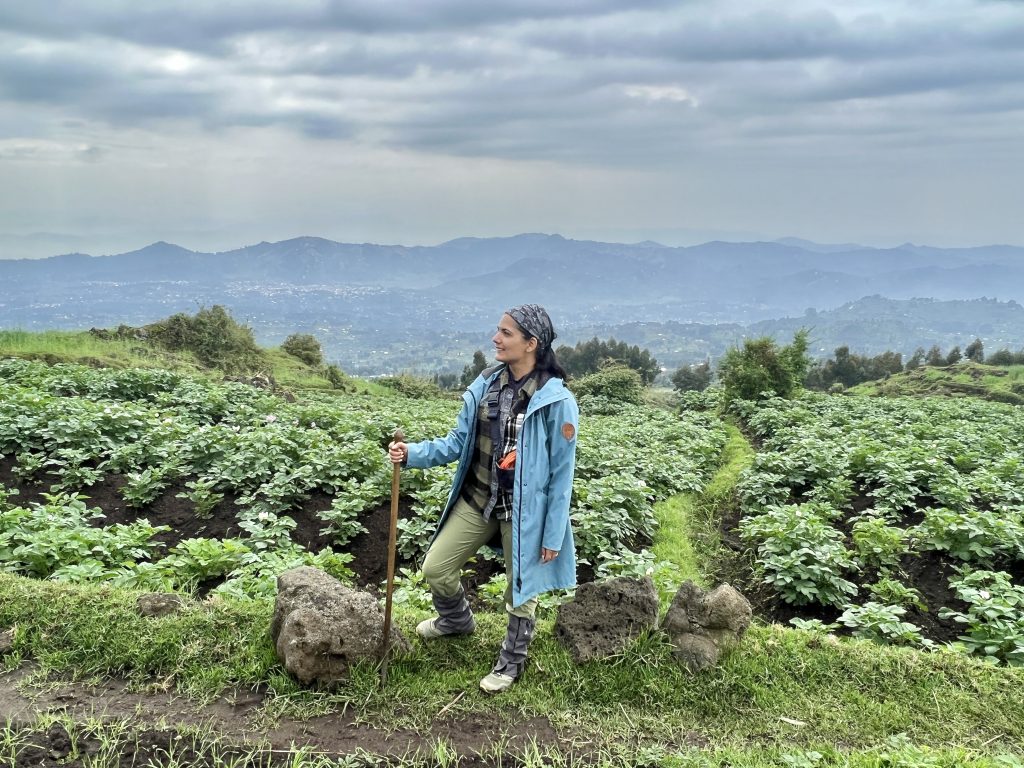
How difficult is it?
Comparing notes with other trekkers I found that every gorilla trek is different. Some can last entire day, others only a couple of hours. You may have easier walks or cross steeper slopes, but you are guaranteed to see the mountain gorillas in Rwanda.
One thing is for sure, Gorilla trekking is not for the faint hearted. You need to be in good physical shape to endure bumpy roads, long hikes, changing temperatures and come face to face with the giant apes. If you are afraid of getting close to wildlife, this may not be the right adventure for you.
How much does it cost?
Visiting gorillas is more expensive than other African animals safaris. Because of their delicate habitats, the government of Rwanda limits the number of visitors to protect the welfare of the gorillas and their homes. The entry fee to Volcanoes National Park is $1500 per person and limited to 80 people a day. That allows you to visit the gorillas only for up to one hour. It does not include your accommodations or meals. You also have to pay for rangers, drivers, guides and porters. Add to that, international flights and other tours, and you are looking at a few thousand dollars for an adventure of a lifetime.
It is worth noting that 20% of tourist revenues from gorilla trek permits go to the local communities surrounding the park. The rest is used for the maintenance of the infrastructure in and around the national park.
Packing and preparing tips
In terms of packing for your trip to Rwanda, there are no luggage restrictions unless you plan on taking the jumper flights between cities. You definitely need to bring a waterproof backpack, a rain jacket, lots of layers and good hiking boots. Wear long pants and shirts to protect against the cold, sun, bugs and nettles. The weather in the mountains can change drastically. It was actually quite cold the first day I was there. Carry a winter hat and fleece.
Because gorillas and humans share the same genetic makeup, they can pass on respiratory diseases (including flu and COVID-19) to each other. You may need to get tested and have to wear a mask while visiting the gorillas.
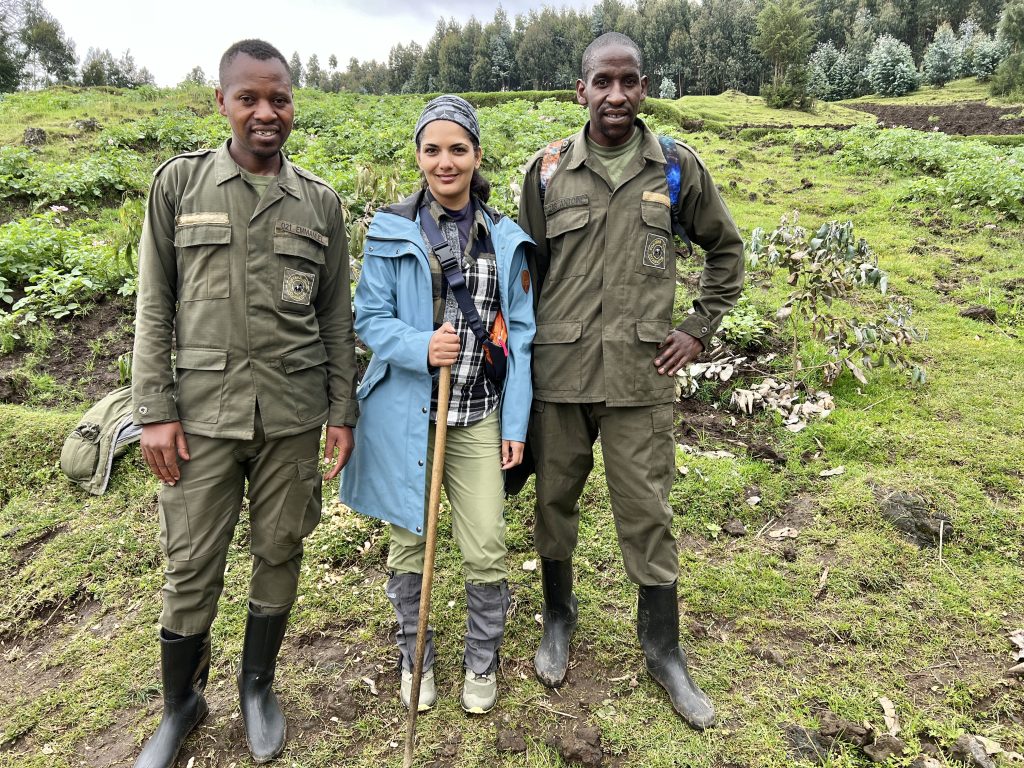
Make sure to visit an ATM or convert currency to Rwandan Franc and carry loose change to give as tips. You should pay $15-20 to each trek leader, guide, tracker and porter for the service they provide. The rangers have tough lives. They live in the remote jungle for 5-10 hours each day, guarding each gorilla family and tracking their locations. Tourism is the biggest source of employment for locals in this area. The locals depend on the limited number of travelers who visit the area. Many of the guides are former gorilla poachers. By creating alternate sustainable sources of employment, it helps protect the environment as well. My two porters were farmers and carried bags for the treks as a second job.
Also worth noting, is 20% of tourist revenues from gorilla trek permits goes to the local communities surrounding the park and the rest for the maintenance of the infrastructure in and around the national park.
Things to do while in the area
If you go gorilla trekking in Rwanda, plan to spend at least a week or two to visit other national parks, lakeside towns and cities. In Musanze, learn more about the mountain gorillas at the brand new museum located at the Ellen DeGeneres Campus of the Dian Fossey Gorilla Fund.
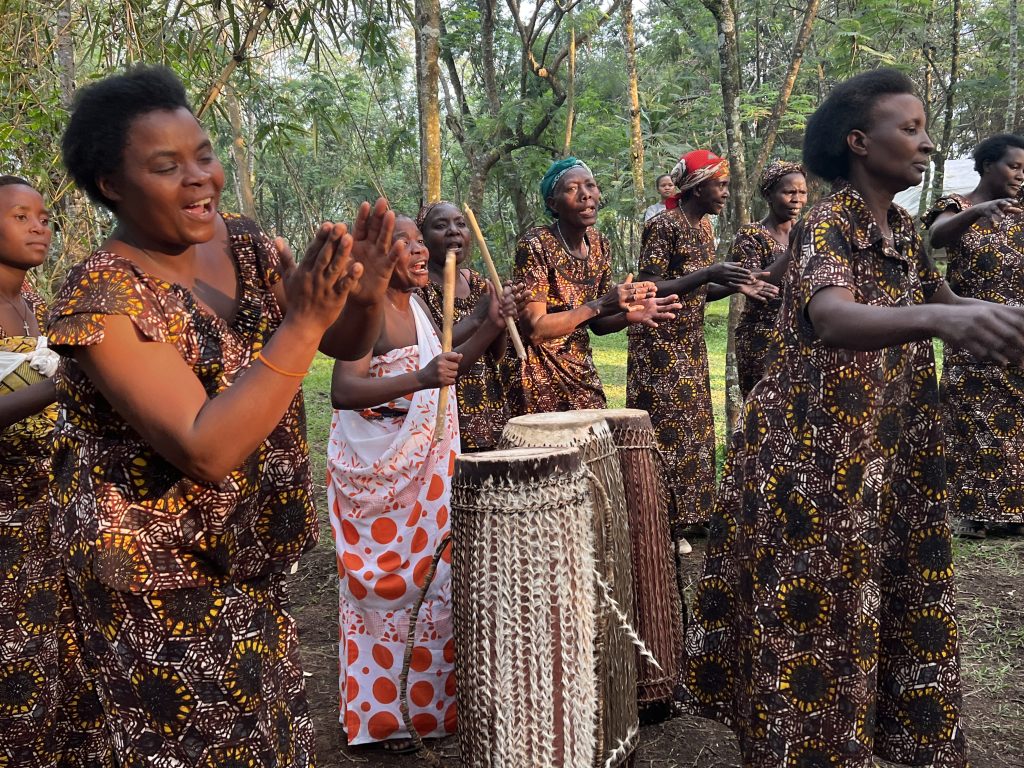
The Red Rocks Intercultural Exchange Center is also a good place to learn about Rwandan culture. Here you can stay overnight in the modest hostel. Or book day time organized touristic workshops such as banana beer making, music and dance. There are also many art galleries and fair-trade shops around Musanze town.